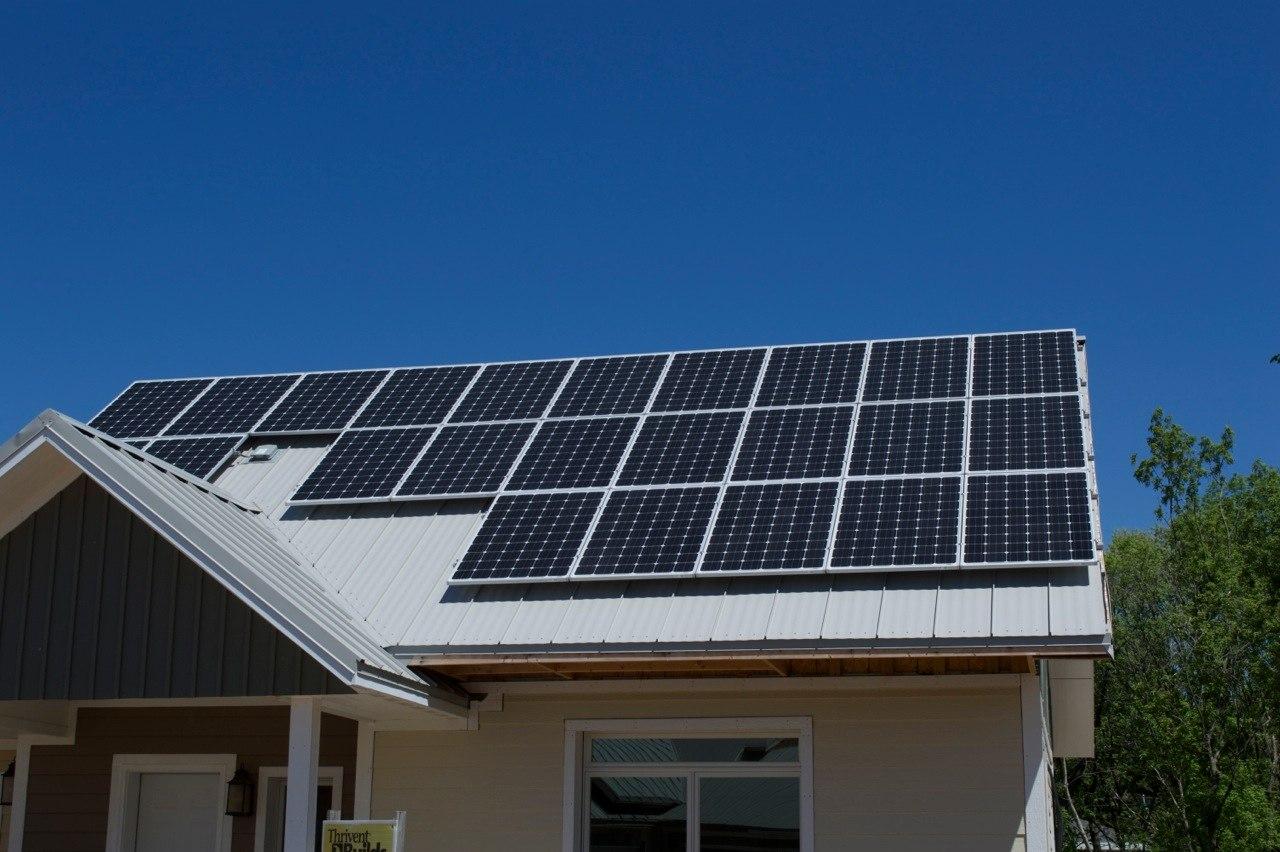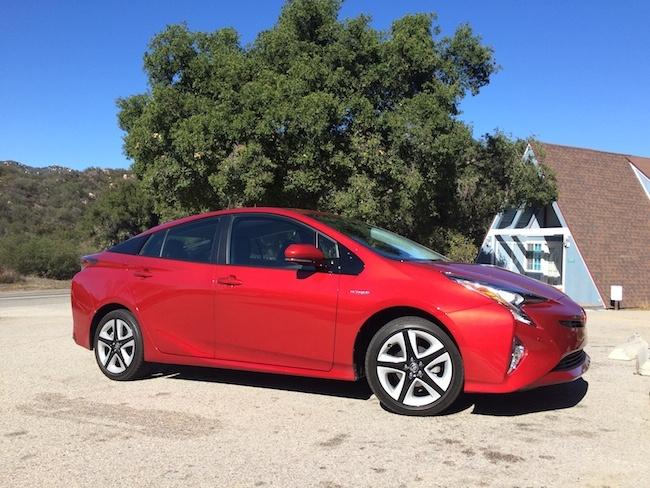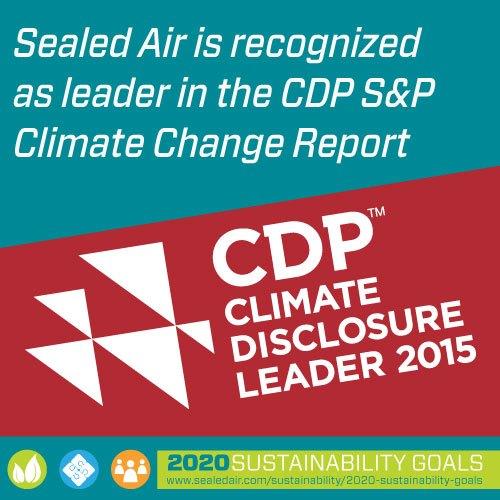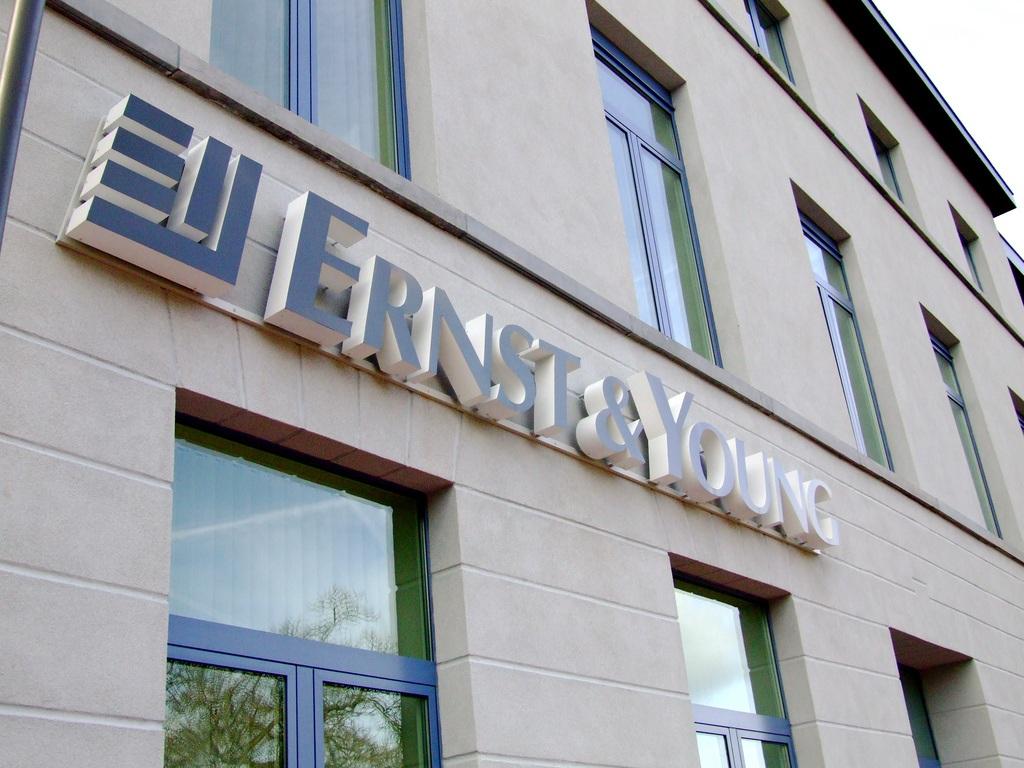Solutions to Grocery Store Food Waste


Food waste in the U.S. is a major problem. The economic impact of food waste in the U.S. is equivalent to $197.7 billion, according to a report by the Barilla Center for Food & Nutrition (BCFN).
Forty percent of food goes uneaten in the U.S., a National Resources Defense Council (NRDC) report found. While some of it is thrown away by consumers, some of it is also thrown out by retailers. In store food losses totaled about 43 billion pounds in 2008, equal to 10 percent of the nation’s total food supply at the retail level.
There are a number of solutions to reduce food wasted by grocery stores and one of them is legal. Earlier this year, France passed an amendment to ban French grocery stores from either throwing away or destroying unsold edible food. Although the amendment was dropped from the new law, a bill is being proposed to ban food waste in grocery stores.
One U.S. state decided to take action to reduce food waste. Massachusetts and its Department of Environmental Protection (MassDEP) established a ban on solid waste disposal. The ban applies to businesses and institutions that throw away one ton or more of food waste a week and went into effect on October 1, 2014.
Businesses and institutions that are affected by the Massachusetts law are required to either donate or re-purpose the usable food, and the remaining food that can’t be used can either be sent to an anaerobic digestion facility and converted to energy or to composting and animal-feed operations. The ban helps the state reach its goals to reduce all waste by 30 percent by 2020 and 80 percent by 2050.
Another solution is for governments to encourage food waste reduction. Back in September, U.S. Agriculture Secretary Tom Vilsack and the Environmental Protection Agency (EPA) Deputy Administrator Stan Meiburg announced the country’s first national food waste reduction goal of 50 percent by 2030. To help meet the goal, the federal government is leading a new partnership with the private sector, nonprofit organizations, and state and tribal governments to reduce food waste and loss.
That is not the first time the federal government encouraged food waste reduction. In 2013, the Department of Agriculture and EPA launched the U.S. Food Waste Challenge, which helps organizations and leaders share practices for reducing, recovering and recycling food waste.
One organization works with grocery stores to sell misshapen produce
One of the reason’s why grocery store chains are responsible for so much food waste has to do with consumers. Most people pick produce that look good and bypass the misshapen fruits and vegetables even though they are edible and packed with the nutrients our bodies need. Twenty percent of the produce grown in the U.S. is rejected from grocery stores because it is misshapen, according to Imperfect, the organization that buys the fruits and vegetables usually overlooked.Imperfect buys misshapen fruits and vegetables directly from farmers that grocery stores have rejected and sells it at a 30 to 50 percent discount. It does so “in order to reduce food waste and increase access to fresh produce,” Ben Simon, CEO, Imperfect told Triple Pundit. The organization’s mission is to “show the world the true beauty of ugly produce” and it has a weekly produce delivery subscription in the Bay Area with about 1,000 subscribers.
Imperfect is the “first major company to sell this cosmetically-challenged or ‘ugly’ produce through grocery stores.” One of those grocery store chains is Raley’s, which has stores in California and Nevada. Last summer, Raley’s partnered with Imperfect to sell misshapen fruits and vegetables. Calling the pilot program “Real Good,” Raley’s launched it in 10 Northern California stores in mid-July. Through the program, Raley’s sold misshapen produce in the participating stores at a lower price.
It is important for grocery stores to sell misshapen food, Simon said. The reason is simple. “For the average American consumer, grocery stores are their connection to where food comes from,” he explained. “As anchor institutions in our communities, grocery stores have a responsibility to be part of the solution around food waste.” Grocery store chains have a “big opportunity with the new ugly produce trend to do well and do good at the same time,” he added.
Food waste is not only an economic problem but an environmental problem. Food waste in the U.S. makes up 21 percent of the nation’s municipal solid waste in landfills, giving off methane, a greenhouse gas with a warming potential 21 times carbon dioxide. Landfills are the third largest source of methane emissions in the U.S. As Simon put it, “Food waste is one of America's largest environmental challenges,” and it is “one of the leading drivers of climate change.” And one of the “largest contributors to food waste in America” is misshapen fruit, he said.
Breaking Down Barriers to Net Zero Homes


By Eliza Clark, Andersen Windows
Buildings account for about 40 percent of all carbon emissions in the United States – more than any other sector. It’s safe to say there’s no way we can effectively address climate change unless we can dramatically reduce the energy consumption of our commercial and residential buildings.
As a founding member of the U.S. Green Building Council, Andersen has been an active participant in the development and advancement of the sustainable building movement. Now more than just a “trend,” green building has become a major economic driver in the commercial real estate market, with forecasts stating that green construction will directly contribute 1.1 million jobs by 2018.
Unfortunately, green building has not expanded with the same speed and scale in the residential segment. While some eco-minded homeowners are opting for sustainable materials and practices today, high-performance green homes have remained a very small niche of the home building and remodeling market.
Even without significant consumer pressure, many building product manufacturers have pushed the limits of energy efficiency in their products. Today, it’s possible to achieve not just a “greener home,” but to build a home that is so energy efficient that a renewable energy system can offset all or most of its annual energy consumption.
Also known as “net zero” or a “Zero Energy Ready” home by the Department of Energy, these homes provide homeowners with not just environmental piece of mind, but valuable ongoing cost savings on their utility bill.
Clearing the hurdles
So why haven’t net zero homes caught on in the mainstream market? We believe the obstacles fall in three primary categories:
- Price. There’s a powerful fallacy that green homes are priced out of reach for most homeowners, and that net zero technologies would require a drastic lifestyle change. In reality, the costs associated with net zero building technologies have dropped noticeably, making it much more affordable than many believe. Most net zero homes look and function like millions of other average homes found around the world.
- Innovation. While the technology exists today, it’s difficult for homeowners to access and understand the concept of net zero without active education from their architects, builders, or building product suppliers.
- Public-private collaboration. Building codes and municipal infrastructure must allow for net zero innovation.
Proof of concept at Eco Village
One pioneering development built by St. Croix Valley Habitat for Humanity in River Falls, Wisconsin has cleared all three of those hurdles and proven the potential of affordable Net Zero. In a first-of-its-kind endeavor, Eco Village was designed to prove that zero energy neighborhoods can be affordable, beautiful, durable and comfortable.
Andersen was part of the diverse public-private sector team that collaborated on this project to prove that the right combination of efficient products and technologies doesn’t have to be cost-prohibitive or perform to a lesser standard. The outcome shows how, by investing in a thoughtful, collaborative approach to home and neighborhood design, net zero is achievable for homeowners in every price point. A whole-building approach pays off in the long term and ultimately benefits the whole surrounding community.
Many already know that Habitat for Humanity strives to make purchasing and owning a home more affordable for those on limited budgets who could benefit from homeownership the most. Because net zero homes have much lower operating costs, homeowners save money over the long-term that can be redirected to other expenses that improve their family’s health and quality of life.
Eco Village has also proven out the value of educating homeowners about how their everyday actions affect their energy consumption. With ongoing monitoring available through a smartphone app, neighbors can compare their home’s energy performance with others. Visiting the neighborhood, the home designs and landscaping don’t look that different from other new developments under construction around the country.
From Exception to rule
What we’ve proven in one community is not an exception, but should become the rule among home design and construction professionals. It’s what innovation should do: introduce and prove the possibility of a more sustainable future, over and over again, until it’s not extraordinary. It’s just homeownership as usual.
Eliza Clark is Director of Sustainability at Andersen Corporation
Kimberly-Clark Takes on Toilet and Sanitation Access


By Karel Van Der Mandele, Marketing Director, Family Care UK & Eire at Kimberly-Clark, and Tom Berry, Head of Sustainability, EMEA
In September 2015, the Sustainable Development Goals (SDGs) - that aim to build on the progress achieved under the Millennium Development Goals (MDGs) - were adopted at the United Nations General Assembly. The MDGs were created in 2000 as global targets to reduce poverty and improve the lives of adults and children over 15 years. Progress towards the MDGs has been uneven. Some targets, like those around increasing access to improved sources of water and dramatically reducing malaria mortality rates globally, have been met. Others have not. A major target of the MDGs was to halve the proportion of people without access to basic sanitation. However, as we approach the deadline, one in three people globally – some 2.4 billion people - still do not use or have access to improved sanitation. This year the debate around the Sustainable Development Goals (SDGs) was focused on how we can find ways to tackle the root causes of poverty and find answers to the world’s most difficult questions, like how to provide adequate and equitable sanitation for all by 2030.
It has become increasingly clear that not only is a new approach needed, but that the SDG agenda must and will involve a hugely diverse range of players – including crucially, a much bigger role for the private sector. Business is after all a key driver of growth in developing countries.
Businesses play a vital role in bringing about behavior change at scale to address some of the world’s biggest development issues, not just through philanthropy and corporate social responsibility, but by aligning business growth to wider social and environmental benefits. In essence we know that while we as businesses have to focus on commercial growth, we can drive bigger growth through collaborations that drive wider benefits and in doing so will help achieve the targets of the SDGs.
At Kimberly-Clark we have been on our own journey to understand this important model of driving business growth alongside the sort of environmental and social improvements that have been championed in the SDGs. We’ve long connected sustainable business growth with sustainable sourcing of materials, for example. In our case, as one of the world’s biggest producers of essentials like tissues, feminine hygiene products and diapers, and therefore one of the biggest buyers of market pulp, we feel it is our responsibility to reduce deforestation. And we do that by working with others. So, for example, we have a long-standing commitment to a 100 percent certified fiber supply, and have a preference for Forest Stewardship Council (FSC)-certified sourcing. In 2012, we made a public commitment to halving our impact on natural forests by the year 2025 through increased research and commercialization of alternative fibers and other sustainable sources. In fact, major environmental groups, including Greenpeace and the World Wildlife Fund, have recognized us as a leader for responsible fibre sourcing and forest protection.
In recent years we have looked at how we as a business can help in other areas, including this critical issue of sanitation, which has proved so difficult to address. We are founder members of the Toilet Board Coalition which brings together private sector companies and NGOs, organizations with wildly different areas of expertise, to make a greater impact. And because sanitation is inherently linked to our business, we believe we have a key role to play in engaging our employees, customers and consumers to take action. Our desire to help resolve this global issue has led us to develop a large-scale multi-national program titled Toilets Change Lives. Our Andrex brand partners with Unicef to support programs educating children and their families about the importance of sanitation in Africa. The partnership, now in its second year, has already raised £250,000 through an on-pack promotion in store at Sainsbury’s, and is helping 60,000 people gain better access to sanitation, reducing the spread of diseases that can be fatal to children and their families.
These partnerships not only raise vital funds but also help break taboos around talking about sanitation. Making the issue part of a public conversation is critical to getting it on government agendas and finding solutions, which will differ from community to community. This is one area where business – and particularly a business involved in the daily essential of going to the toilet – can really help. The more we can link our tackling of the issue of sanitation to our growth as a business, the more we can do to help. The sustainable support for programs that help society is just as important to the long term health of our business, as the sustainable sourcing of materials like fiber.
Tackling the issue of sanitation is critical to the countries and people who suffer without improved sanitation as has been recognised in the SDGs. But it is also highly relevant for Kimberly-Clark and our individual brands. Kimberly-Clark exists to provide people with essentials for a better life, and what could be more essential than sanitation? We have found a way to link our brand promise with sanitation programs, through a social mission that campaigns to bring safe sanitation to all. This is about us as a personal care brand that truly cares about the wellbeing of people and is prepared to address this issue worldwide.
In fact, the success of the Andrex program has inspired other regions to expand Toilets Change Lives to different markets around the world. In 2016 and beyond, we will develop more programs in the U.S., South Africa, Switzerland, the Netherlands and India across several lines of business.
By collaborating with partners and finding a strategic fit between social issue, corporate strategy and brand positioning, we can deliver emotional and powerful campaigns, that engage consumers in our existing markets and help create new markets as sanitation systems are improved. This is what we mean by sustainable business. We are proud of where we are today and we remain committed to doing our part in addressing the issue of sanitation as the Sustainable Development Goals come into play early next year.
Toyota's New 2016 Prius Pumps Up Hybrid Market With Sport And Style


This past September, Triple Pundit was on the scene when Toyota premiered a sporty red 2016 Prius in Las Vegas for photographers, and just last week the company invited us to California for two days of pre-release driving on the open road. We're happy to report that the visual promise of the Las Vegas photo op is fully realized when you're behind the wheel, whether you're zipping past trucks on I-5, scooting through local traffic on the Pacific Coast Highway, or threading the curves of Ortega Highway, up and around the hills to Cleveland National Forest. We can also give you the inside scoop on how the company's all new 2016 RAV4 hybrid performs on the road.
Saving Space For Hybrids In An EV World
Before we get to the fun part, let's step back and take a look at the big picture. Electric vehicle technology is progressing rapidly, and EV charging stations are becoming more commonplace, but EV sales are still miniscule compared to gasmobiles, including hybrids.
For the foreseeable future there will still be plenty of room for vehicles with gas tanks, and Toyota seems more determined than ever to own the hybrid gas-electric part of that market. Toyota was in the vanguard of popularizing hybrid technology for the mass market when it launched the Prius globally back in 2001 (after its 1997 launch in Japan), long before the urgency of carbon management took hold. Despite the drop in gas prices, Prius sales have been surging and a new generation of eco-conscious drivers (including cab and Uber drivers, by the way) is pushing the trend to higher sales in the future.
While Toyota's efforts to crack the full battery EV market seem a bit tepid compared to some other auto makers -- the short lived RAV4 EV being one example -- the company seems to have its eyes on a bigger prize. This fall Toyota launched the futuristic Mirai, its first commercial hydrogen fuel cell vehicle, calling it a "turning point in automotive history."
Toyota has also engaged in other fuel cell projects linked to sustainable hydrogen production (for those of you new to the topic, fuel cell vehicles are electric, but they use a chemical reaction to generate electricity on the go, rather than storing electricity in a battery as with plug-in EVs).
We're thinking that Toyota will continue deploying hybrid technology to draw in new waves of new buyers to its brand, even borrowing ideas from the EV market to make gas fueling more convenient for hybrid owners, while paving the way for mass adoption of fuel cell vehicles powered by sustainable hydrogen.
It's also worth noting that the Mirai is designed with a power control unit borrowed from the Prius, so Prius owners are already riding on a piece of the future.
Pulling More Hybrid Drivers Into The Fold
That brings us around to the new 2016 Prius line. The company is certainly confident of its appeal to eco-conscious drivers, but it is not taking anything for granted in that sector. In a presentation before we hit the road, Toyota personnel detailed a raft of new efficiency improvements for the Prius, such as aerodynamic improvements to reduce drag as well as electrical system improvements. The company has also introduced a new "Eco" model, which delivers additional efficiencies for a marginal increase of a few hundred dollars in price.
Toyota personnel also explained the reasoning behind the introduction of a more powerful model to the line (we drove a candy apple red one, pictured above). With the eco-conscious market in hand, Toyota is seeking to attract auto buyers who value a more youthful look and a more sporty feel. That includes older drivers as well as the much sought-after millennial market.
We tried both the eco and the sporty models, and they both certainly delivered. Take it from someone who has never driven a Toyota -- or a hybrid -- before, as soon as you get behind the wheel and adjust your seat, you feel right at home in both models.
We took the the eco for a short spin on a handling course, and it took the rapidfire series of curves, bends and obstacles without a hitch. The real fun started when we hopped in the sport model and took it for a spin down the I-5 and on to Ortega highway, up into the steep hills. The transition from flat-out freeway driving to local traffic and on to a two-lane country highway was absolutely seamless, and we have to admit that part of the fun was catching double-takes from other Prius drivers who were surprised to see a jazzier version of their ride cruising down the road.
No, we didn't forget the new RAV4 hybrid. Toyota put a lot of effort into transferring its hybrid technology into the sport utility vehicle platform, and it pays off. We took a RAV4 hybrid on the same route as the Prius, and it handled the same traffic and speed transitions with fluid ease. This longtime gasmobile SUV driver (since 2002) can certainly testify that switching off to a hybrid is as easy and intuitive as getting behind the wheel of any other conventional car. The power control unit does all the work of juggling the battery and the gas tank, and you just sit back and enjoy.
Toyota And The Whole Enchilada
Building high-mileage cars is just one way that Toyota manifests its vision for the future. As frequently chronicled by Triple Pundit, the company is deeply embedded in forward-looking, sustainable production models, and it has transferred its supply chain management know-how to community service projects.
Among other projects, Toyota recently introduced the Toyota Mobility Foundation to help solve mobility challenges globally, and just last year it ramped up its efforts in the North America by establishing a new office for social innovation.
Photo credit: 2016 Prius parked by the Ortega Oaks Candy Store on Ortega Highway, across from the San Juan Loop and Bear Canyon trailheads in Cleveland National Forest (original photo by Tina Casey).
Twelve Companies Commit to Providing "Good Work" for Freelancers


"Change is inevitable but progress is optional. Leadership makes the difference.” – Andrew Stern
While experts still disagree about exact figures, it is likely that by 2020 between 40 percent and 50 percent of the U.S. workforce will be engaged in freelance and so-called “gig economy” jobs like driving for Uber or Lyft, being a “tasker” on TaskRabbit, delivering groceries for Instacart, or freelance knowledge work found through a platform like UpWork. For Palak Shah, Social Innovations Director at the National Domestic Workers Alliance (NDWA), this emerging landscape presents an unprecedented opportunity to shape the future of work for everyone who now works without the protections that traditional labor laws provide.The Good Work Code
At the Next:Economy summit in San Francisco (November 12 -13), Shah announced that twelve companies – including DoorDash, VetPronto, Care.com, CareLinx, LeadGenuis, and Managed by Q – have now committed to taking action on one or more of the tenets of the Good Work Code, an overarching framework of eight values that are the foundation of good working conditions for freelance and independent workers, including safety, stability & flexibility, transparency, shared prosperity, a livable wage, inclusion & input, support & connection, and growth & development. I sat down with Shah at Next:Economy to find out more.Domestic and freelance gig work: The wild, wild west
The NDWA is an alliance of 53 organizations who engage in advocacy for the rights, respect, and dignity of domestic workers, the nannies, caregivers, senior care workers, and house cleaners who are excluded from U.S. labor law protections. As the many recent lawsuits against Uber and other new companies that rely on gig workers have made clear, the NDWA may now have many more allies in the movement to establish labor protections for this rapidly growing sector of the economy. “Domestic workers face the same kinds of conditions that gig economy workers are starting to talk about, like inconsistent hours, working without contracts, no benefits, no health care, no retirement benefits,” Shah told me. “Domestic work, like freelance gig work, is the wild, wild west – it’s an unregulated, completely disaggregated, distributed market.”Solving for equity: Creative collisions required
The Good Work Code has been in the making for just over a year as Shah witnessed the emergence of the intersection between domestic work and tech. Of the two to three million domestic workers in the country, not many are on tech platforms yet. But as new startups began to emerge and conversations about policy in the gig economy began to pop up, Shah realized an overarching framework for this sector of workers was missing. “The real breakthroughs are going to come through the collaboration of social movements and tech. I don’t see it happening in either discipline alone,” Shah told me. “It will be the friction and interaction between these disciplines that will actually result in something that works. The Good Work Code is the first step.” Increasingly, the algorithms that run our enterprise platforms are dictating, or at least influencing, the way we interact. In that way, our labor policy may actually be unintentionally hidden in those algorithms. So-called “lean” shift scheduling software, for example, makes the new on-demand economy possible, but it has not so far been optimized for the workers on which these businesses rely. “These algorithms do a brilliant job of solving for efficiency and convenience,” said Shah, “but what we haven’t seen is algorithms solve for equity or any derivative of equity like the ones we have in the Good Work Code. We did a whole round of innovation to solve for efficiency and convenience. Let’s now do a round of innovation for solving for equity and derivatives of equity. That’s the intent behind the Good Work Code.”Stepping up to an act of public leadership
In the end, this is not only a conversation about labor rights in the future of work, it is a business conversation. “Next economy” companies and platforms that take public leadership positions on their commitment to good work will attract the best workers. Countless studies show that companies with happy workforces tend to succeed over the long term. The twelve companies that have committed to action on one or more of the eight parts of the Good Work Code will no doubt leap frog their competition in the quest for the best workers. Who is next? Images used with permission of the National Domestic Workers AllianceSodexo partners with WWF to pilot sustainable school meals programme


Green & Lean is the name of a new range of sustainable school meals from Sodexo.
The line is part of a pilot project through Sodexo’s partnership with WWF on LiveWell, WWF-UK’s flagship programme of work which aims to encourage businesses and policy-makers to facilitate the adoption of diets which are both healthy and sustainable.
The meals, which were developed jointly by WWF experts and Sodexo chefs, are both nutritious and lower-carbon as well as being made from ingredients are responsibly sourced.
For example, plant-based foods have to account for at least two thirds of the volume of each meal; refined grains are replaced with whole grains; and meat and fish has to have relevant certification, such as MSC or RSPCA Assured. They include favourites such as beef lasagne, chicken and leek pie and Lancashire hot pot.
Sodexo’s executive development chef for Independent Schools, Tom Allen commented: “It was really important that the meals we created tasted great. The idea was to make small changes to popular, well-loved dishes that would up the nutritional content and reduce the environmental impact, without dramatically changing the taste or the look of the dish.”
Following the pilot, Sodexo intends to market the meals under the Green & Lean brand to other clients in the schools and universities sector, and within its corporate services business.
Why We're Still Going to Paris


In light of recent events, our readers and colleagues have asked us what will become of the long awaited UN Climate Climate Change Conference (COP21) scheduled for Paris next month. They've also asked whether or not we plan to proceed with our plans to travel to Paris to cover the event. The answer is that COP21 is most definitely scheduled to proceed with multiple heads of state including President Barack Obama planning to attend. We too we will be there, as planned, with an even greater sense of personal urgency.
Why the greater urgency?
In a nutshell, the entire mission of TriplePundit - the triple bottom line - is to demonstrate that social, environmental and economic issues are inexorably connected and dependent on one another. Climate change may seem like an existential and distant threat compared to ISIS, but it is very much intertwined with the very same social problems that give rise to international conflict and even terrorism. In fact, climate change, compounded by population pressure, is already among the single biggest destabilizing forces in the world today. Failing to address it will almost certainly lead to more social unrest, more angry, desperate people, and more terrorism.
For example, a 2014 study closely connected general instability and rioting with the price of basic food stuffs. Drought, flood, and other unsettling forces that will raise food prices are predicted to be exacerbated by climate change especially in areas that are already marginal in terms of their ability to produce food - like Syria for example. Climate change is even caused in part by one of the same things that funds terror and war in the Middle East - our insatiable appetite for oil - meaning that one of the biggest ways to combat it will also directly de-fund terror.
On the bright side, the type of international cooperation that is required to halt our dependence on fossil fuels and curb our carbon emissions is exactly the kind of cooperation that will address terrorism and social unrest. It will also require a large scale re-examination of our economic system - most specifically the rewarding of short-term gains at the expense of long-term payoffs. It will also require us to deeply consider the myriad bottom-of-the pyramid economic problems and emerging solutions around the globe -- an effort to bring the global under-class into something resembling a middle class -- with women's rights and educational opportunities for children. Such growth is a recipe for population stability as well as the kind of social stability that means less conflict, less refugee crises, and less appeal to fringe religious groups promising salvation by suicide vest.
The kind of roadmap being discussed at COP21 may not directly get into the issue of terror, but the solutions and agreements that will be decided at the event will have immense benefit to humanity far beyond the specific issue of climate. There has never been a greater urgency to proceed with a conversation on climate change and never a greater urgency to come to a binding agreement on the reduction of our global carbon footprint.
We are proud to be representing you, our readers, at COP21 and very much welcome your feedback and ideas as to how we can best move things forward.
Will you be in Paris? Got something to suggest? Please leave a comment below or join us on Twitter at #GoParis.
Image: Martijn Adegeest/Pexels
Op/Ed: Sealed Air Named to CDP Climate Performance A List


By Ron Cotterman, VP Sustainability, SealedAir
We are excited to announce that Sealed Air’s efforts to reduce greenhouse gas (GHG) emissions and mitigate the risks of potential climate change have been recognized by CDP. As stated in this year’s CDP 2015 Climate Change Report, Sealed Air was named to the Climate Performance Leadership Index (CPLI) A List and also received a 100 percent Disclosure score, earning a position in CDP’s S&P 500 Climate Disclosure Leadership Index (CDLI), for the second consecutive year.
CDP is an international, not-for-profit providing the only global system for companies to measure, disclose, manage and share environmental information. Through the global system of CDP, companies are better able to mitigate risk, capitalize on opportunities and make investment decisions that drive action towards a more sustainable world. Measurement, management and disclosure of GHG emissions and climate change data are increasingly important aspects of sustainable business practice.
An integral part of Sealed Air’s sustainability strategy is focused on GHG reductions, reducing operating costs and risk, and generating value through solutions that reduce waste, conserve energy and water, and optimize the use of raw materials for its customers. Earlier this year, the Company announced its 2020 Sustainability Goals, which are an aggressive set of targets and commitments to drive the continued strategy for mitigating the risks of climate change.
Sealed Air achieved the maximum score and A rating by reducing its energy intensity and GHG emissions while maintaining customer value and cost competitiveness. Sealed Air teams are actively sharing footprint reduction best practices in sustainability projects across all sites. In 2014, 39 projects to reduce energy & GHGs were implemented, with an estimated reduction of more than 30,000 metric tons of CO2. Projects include lighting, upgrades to compressed air systems, boiler upgrades, replacement of chillers, recovery & use of SF6 (a highly potent GHG), low carbon energy installations, and behavioral change programs.
Our recognition on the CDP Climate Performance A List and the CDLI is important not only to internal stakeholders but our customers and external partners as well. “We are developing products with lower energy and GHG impact when in use, which is critically important to many of our suppliers and customers, and assists them in achievement of their own goals. In 2014, some examples of those new innovations with lower energy and GHG impact for customers included Freshness Plus, Darfresh On Tray, and Smart Mix Pro Series.
Sofitel Mumbai, a luxury hotel in India’s Mumbai business district, is just one customer that has benefited from some of the work featured in Sealed Air’s CDP submission. The hotel, situated in a region of extreme water scarcity, partnered with Sealed Air’s Diversey Care in an effort to reaffirm its responsibility to sustainable development and environmental efficiency. After switching to the Company’s Clax Advanced® laundry solution, the hotel immediately noticed cleaner, whiter linens on the first wash with less energy consumption in the process. After studying the results during one year of use, Sofitel Mumbai realized 42% reduction in water consumption (7.8 M liters) and 28 Tons reduction in CO2 emissions over their previously used laundry solution.
The work that Sealed Air is doing in climate change mitigation also has a broad impact for the world and the local communities the where the Company operates. In addition to on-site business practices and new innovations, Sealed Air actively partners with Trade associations and third parties to conduct research and to advocate and influence climate legislation. Some of those groups include WWF EUROPEN, AMERIPEN, BIER, CGF, and GEMI.
This year, approximately 2,000 companies reported to the CDP Climate questionnaire. Company disclosures to CDP are scored on a scale of 0 - 100 for completeness and data quality. This year, Sealed Air scored 100 for Disclosure and achieved an A rating on the Climate List, one of only 113 companies accounting for the top 5% of those reporting. High scores indicate that companies provided robust climate data and conveyed a strong understanding of corporate climate-related issues. Companies in the top 10% for Disclosure scores are awarded a position on the CDLI. CDP Disclosure scores are provided to investors and other decision makers through various channels, including Bloomberg terminals, to help them assess corporate preparedness for changing market demands, current and future emissions regulations, as well as current and future physical risks and opportunities associated with climate change.
For more information on Sealed Air’s sustainability commitments, visit our website.
CDP’s annual global climate change report, along with the climate scores of all companies publicly taking part in CDP’s climate change program this year, is available on CDP’s website.
In his position as Vice President, Sustainability, Ron Cotterman is responsible for Sealed Air’s company-wide sustainability strategy. In this global role, Ron leads initiatives in operational excellence, delivering customer value and achieving Sealed Air’s vision to create a better way for life.
FDA Takes Bolder Action on Fresh Produce Inspection


The U.S. government has long encouraged Americans to eat more of many things—depending, of course, on who is in power and which lobbying groups have had the timeliest influence in Washington, DC. We have been lectured about the square meal and the food pyramid, often with dubious results, most notably in the country’s disturbing obesity rates. But to the government’s credit, some programs have found success, such as the “5 a Day” campaign to boost the consumption of fresh fruits and vegetables in our diet.
The emphasis on fresh food, however, has had its own pitfalls. E. coli outbreaks affecting fresh produce have become an annual occurrence, most recently with the recent closure of Chipotle outlets in the Pacific Northwest. The evidence suggests Americans are eating more fresh produce, but much of it is in the form of packaged vegetables, especially salad greens, to which consumers gravitate because of convenience and clever marketing. But the more that bunch of chopped arugula passes through more hands, as in from farm to packing plant to its cellophane packaging and finally, to supermarket shelves, the greater the odds are that something can go wrong.
To that end, the U.S. Food and Drug Administration (FDA), the federal government agency tasked with food inspection but in recent years has avoided much of it thanks to politics, is taking more aggressive action in order to prevent these foodborne illnesses that have turned many a benign meal into a public health threat.
The FDA is trying to address this problem of contaminated produce by enacting final steps in the implementation of the Food Safety Modernization Act of 2011. The agency has developed new rules that third-party auditors must follow when conducting food safety inspections of facilities outside of the U.S. Rules on produce safety also give growers and food processors more clarity on what is needed to guarantee the safety of fresh produce, from employee hygiene to water quality. Some of these rules cover what many of us would assume would be common sense—as in how close domesticated and wild animals can come in contact with produce grown on farms.
In sum, instead of the FDA waiting for a widespread illness to wreak havoc, these new rules behoove farmers, food producers and packing houses to take action and prevent such outbreaks of E. coli and salmonella from occurring in the first place. The FDA says it has arrived at these rules after a long public comment period during which hundreds of farm visits, public meetings and “listening sessions” were organized.
Whether this will all make a difference remains to be seen. After all, the final execution and enforcement of these rules are subject to the 2016 federal budget. Can food safety survive the quadrennial presidential election cycle in order to make a difference and ensure citizens that the fresh products they buy are safe? Or will more people continue to become ill, or even die, from illnesses that could have easily been prevented by a combination of common sense and timely inspections?
Image credit: Leon Kaye
Madoff Ponzi Scheme Judgments Slam 'Gatekeepers' Ernst &Young


More than six years after former stockbroker Bernard Madoff was convicted of fraud, the cost of the Ponzi scheme is still being tallied. This week, a jury in Seattle, Wash. found the auditing firm Ernst & Young guilty of negligence in its auditing of a feeder fund that ultimately directed funds to Madoff's firm. The feeder fund was managed by FutureSelect Portfolio Management, Inc. for its clients. Ernst & Young was found liable for an estimated $200 million that FutureSelect said it invested ion behalf of its investors.
The finding comes on the heels of an announcement by Securities Investors Protection Corp. CEO, Stephen Harbeck that most of Madoff's investors would be getting a complete reimbursement of their investments. Those who had invested up to $1,161,000 in Madoff's Ponzi scheme would be fully reimbursed. Those who had invested more would get less -- about 61 cents on every dollar invested.
“Coming out of a Ponzi scheme with 61 percent of what you started out with is a major victory,” Harbeck told reporters in a statement.
In October a motion was filed in U.S. Bankruptcy Court asking for an increase in the amount paid out to victims. Approximately $7 billion of the $11 billion that officials have been able to find were recovered from the accounts of Madoff's deceased partner, Jeffrey Picower. Only $4 billion of the estimated $17 believed to have been swindled out of investors were recovered from Madoff.
And while this is not the first time that Ernst & Young has been accused of fraud, it is far from the only company that has appeared recently on court dockets related to the Madoff's fraud. In August, Citco Group reached a settlement of $125 million for its part in the fraud. Like Ernst & Young, Citco has been accused of failing to monitor and properly assess funds that were invested in a feeder fund through a secondary company, Fairfield Greenwich Group, which then funneled monies to Bernard L. Madoff Investment Securities LLC. Until this month, the Citco settlement was believed to be the largest of its kind related to losses sustained by the Madoff investment fraud.